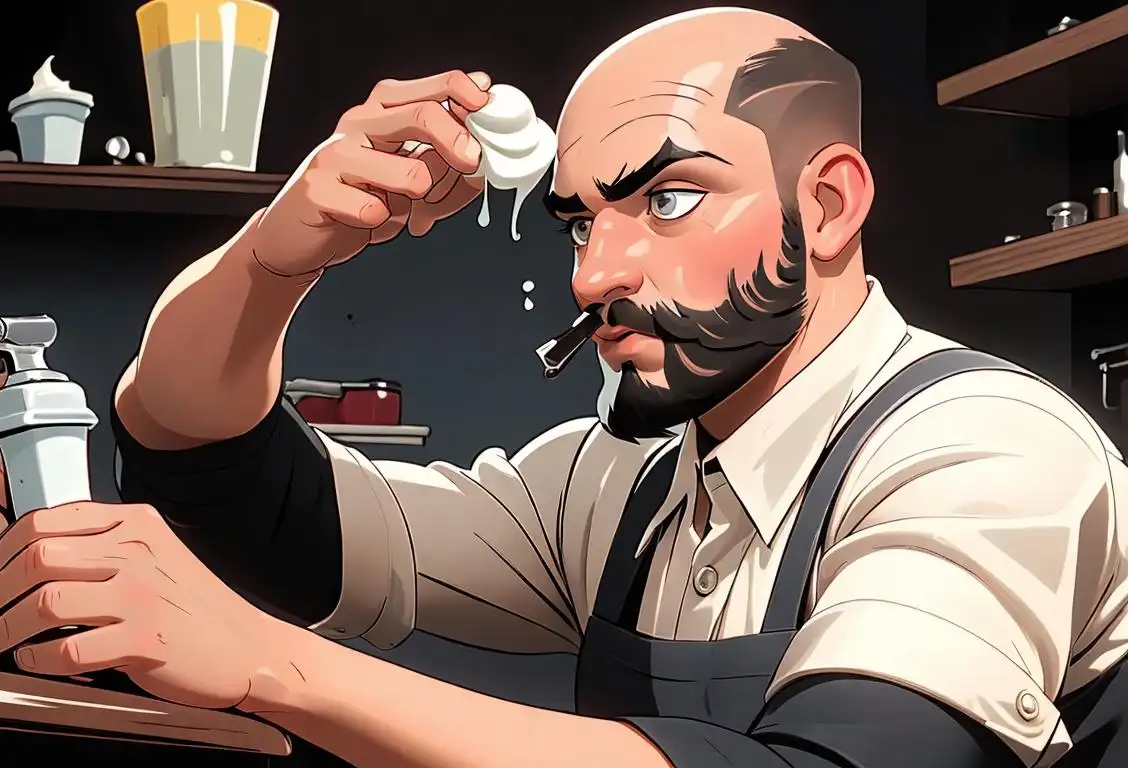National Shave Day

Welcome to the fantastic world of National Shave Day! This is a day where we celebrate the art of shaving and all its glory. So grab your razors, foam up that shaving cream, and get ready to embark on a smooth journey of knowledge and fun!
When is Shave Day?
It's national shave day on the 18th July.
A Brief History of National Shave Day
Do you ever wonder who came up with the idea of dedicating a whole day to the act of shaving? Well, wonder no more! National Shave Day has its origins in ancient Egypt, where the pharaohs would shave their heads and faces as a sign of cleanliness and nobility.
Fast forward to the 20th century, when shaving became a common practice among men all over the world. In an effort to celebrate this daily grooming ritual, National Shave Day was officially established. The first official celebration took place on July 18, 1925, and has been observed every year since then.
How to Celebrate National Shave Day
Celebrating National Shave Day is easy and fun! Here are a few ideas to get you started:
- Gather your loved ones and have a shaving party. You can compare different shaving techniques and products, and maybe even give each other some grooming tips.
- Try out a new shaving cream or aftershave lotion. There are so many different scents and formulas to choose from, you're bound to find one that suits your style.
- Donate your old razors and shaving products to a local shelter or charity. Not everyone has access to these basic grooming tools, so your donation can make a real difference.
Did You Know?
Did you know that the longest beard ever recorded belonged to a man named Hans Langseth? His beard measured an astonishing 17 feet 6 inches long! Talk about dedication to facial hair!
History behind the term 'Shave'
3000 BCE
Ancient Beginnings
Shaving has been practiced by ancient civilizations as far back as 3000 BCE. Ancient Egyptians were known to have shaved their bodies, including their heads, as a sign of cleanliness and hygiene. They used various tools such as sharpened flint, seashells, and even copper razors to remove unwanted hair.
6th Century BCE
Greek Influence
During the 6th century BCE, Greek men began to adopt the practice of shaving, influenced by their love for athleticism and to portray a youthful appearance. They used iron razors with a handle made of wood or bone, and athletes would often completely remove their body hair to enhance their performance and showcase their muscular physique.
4th Century BCE
Roman Evolution
The Romans further refined the art of shaving in the 4th century BCE. They developed a more sophisticated razor with a folding handle, allowing for easier storage and portability. Shaving became a common practice among both men and women in Roman society, and it was seen as a sign of class and refinement. Roman barbershops, known as tonsors, were popular gathering places for socializing and grooming.
12th Century
Medieval Shifts
During the Middle Ages, shaving took a different turn. Beards became fashionable for European men, and shaving became less popular. Knights and soldiers often grew beards as a symbol of their masculinity and prowess. However, hygiene concerns rose, and mustaches remained common. The shaving trend shifted toward maintaining facial hair rather than complete removal.
18th Century
The Rise of the Straight Razor
In the 18th century, the straight razor became the preferred tool for shaving. It was a foldable razor with a long, sharp blade that required honing and stropping before use. The art of shaving began to be perfected, with barbers offering professional services to gentlemen, including hot towel treatments and soothing aftershaves.
20th Century
Safety Razors and Electric Shavers
The early 20th century brought about significant advancements in shaving technology. In 1901, the safety razor was introduced by King C. Gillette, revolutionizing the shaving experience by incorporating a disposable blade with a protective guard. This invention made shaving more accessible and affordable. Later, in the 1930s, electric shavers made their way into the market, providing a convenient and quick alternative to traditional wet shaving.
21st Century
Modern Innovations
Shaving continues to evolve with modern innovations. Multiblade cartridge razors, shaving creams, and gels with various skin-enhancing ingredients have become common. Additionally, there has been a resurgence in the popularity of beards and facial hair styles, leading to the emergence of dedicated beard care products and grooming techniques. The cultural significance of shaving has transformed over the centuries, reflecting societal norms, fashion trends, and personal preferences.
Did you know?
Did you know that the longest beard ever recorded belonged to a man named Hans Langseth? His beard measured an astonishing 17 feet 6 inches long! Talk about dedication to facial hair!Tagged
awareness fun loved onesFirst identified
18th July 2015Most mentioned on
18th July 2015Total mentions
6Other days
Compliment Day
Cheese Pizza Day
Pumpkin Day
Medal Of Honor Day
Guac Day
Foundation Day
Suicide Prevention Day
Memorial Day
Cancer Survivors Day
Bacon Day









